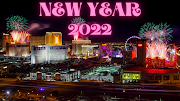Red Rock Canyon National Conservation Area Description
The Red Rock Canyon National Conservation Area receives 1.2 million visitors a year.
The mountains in the Red Rock area were formed by a number of geological forces including fractured faults where the earth's crust collided over millions of years and fossilized sand dunes. Some cliffs reach up an astounding 3,000 feet.
The sandstone rocks in the conservation area get their color from iron oxide. Over centuries the iron oxide built up, producing the vibrant, crimson color the canyon illustrates today.
One of the more scenic parts of Red Rock Canyon is the Keystone Thrust Fault. Here, millions of years ago, two of the earth's plates collided with such force that part of one plate was shoved up and over the other. This created a magnificent contrast between grey limestone and red sandstone.
This amazing conservation area is also home to about 200 different mammals which include burros, rabbits, coyotes, bighorn sheep, red tailed hawks, golden eagles, hummingbirds and even a few wild horses, bobcats and mountain lions.
The 13-mile scenic loop drive exposes visitors to the geological history and splendor of the canyon. There are chances for photo opportunities at various locations including Calico Hills' colorful sandstone, limestone Indian roasting pits, Indian "handprints" and pictographs at Willow Springs.
Since Red Rock Canyon is so isolated and quiet, many like this recreational area as a temporary getaway from the craziness of the Las Vegas Strip. It's also a popular location for weddings.
On certain trails, hikers can even witness waterfalls cascading into the canyon.
Red Rock is open year-round and a favorite among many tourists, sightseers, joggers, hikers and rock climbers. Visitors can also go horseback riding.
Red Rock Canyon is part of the Mojave Desert, which stretches out to the corners of California, Utah, Arizona and Nevada.
Make sure to check out the Red Rock Visitor Center, which is is bigger than you can ever imagine. The massive outdoor exhibit may be hot during the summer months, but there are plenty of areas in the shade as well as water fountains at every corner.
The area is divided into four large sections: Earth, Air, Fire and Water. Within these four sections, you'll get a chance to read about history, geography and animal and plant life. One of the fascinating facts about Red Rock is that it has 10,000 years of human history. You'll see artwork (petroglyphs) as well as fire pits, giving you an idea how native people lived.
If you're lucky, you might get a peek at Mojave Max, the center's desert "spokes" tortoise. There are also seven female tortoises outside, so if Max is hiding you might see one of them. On certain days of the week, the workers give them ground-up plants with water, packed with plenty of nutrients.
The exhibit also features enlarged maps of the 19 different hiking trails, complete with highlights of each one.You can have a picnic at Willow Springs, or even see springs and waterfalls at Ice Box Canyon and Lost Creek. There is also a list of hiking tips just outside the gift shop.
You'll learn that this area is a lot more colorful than ever. The interactive stations also include information on several different animals including deer, sheep, squirrels, burros, kangaroo rats, kit foxes, rabbits, roadrunners and much more. You'll also read a slew of fun animal facts. For instance, did you know that the ground squirrel uses its white fluffy tail like an umbrella to cool off his back? There is also information about creatures you may not have heard of, like the ring tail cat. This unique animal looks like a small fox with a raccoon tail. You'll even learn more about all the vibrant-colored birds (like hummingbirds and partridges) that dwell in the desert.
In addition to all the creatures, there is more to Red Rock than just cactus trees and sage bushes. The visitor center also provides information about all the types of flora, from the desert wildflowers to the purple mats and desert marigolds. Other desert plant life includes coyote tobacco, buckhorn cholla and the famous Joshua tree, home to birds, lizards, mice and more.
The gift shop sells hiking sticks (complete with bells), Southwest-inspired artwork, a variety of stuffed animals and much more. Make sure to stop by the front desk before you leave to grab free pamphlets and more information about the different hikes.













0 Comments